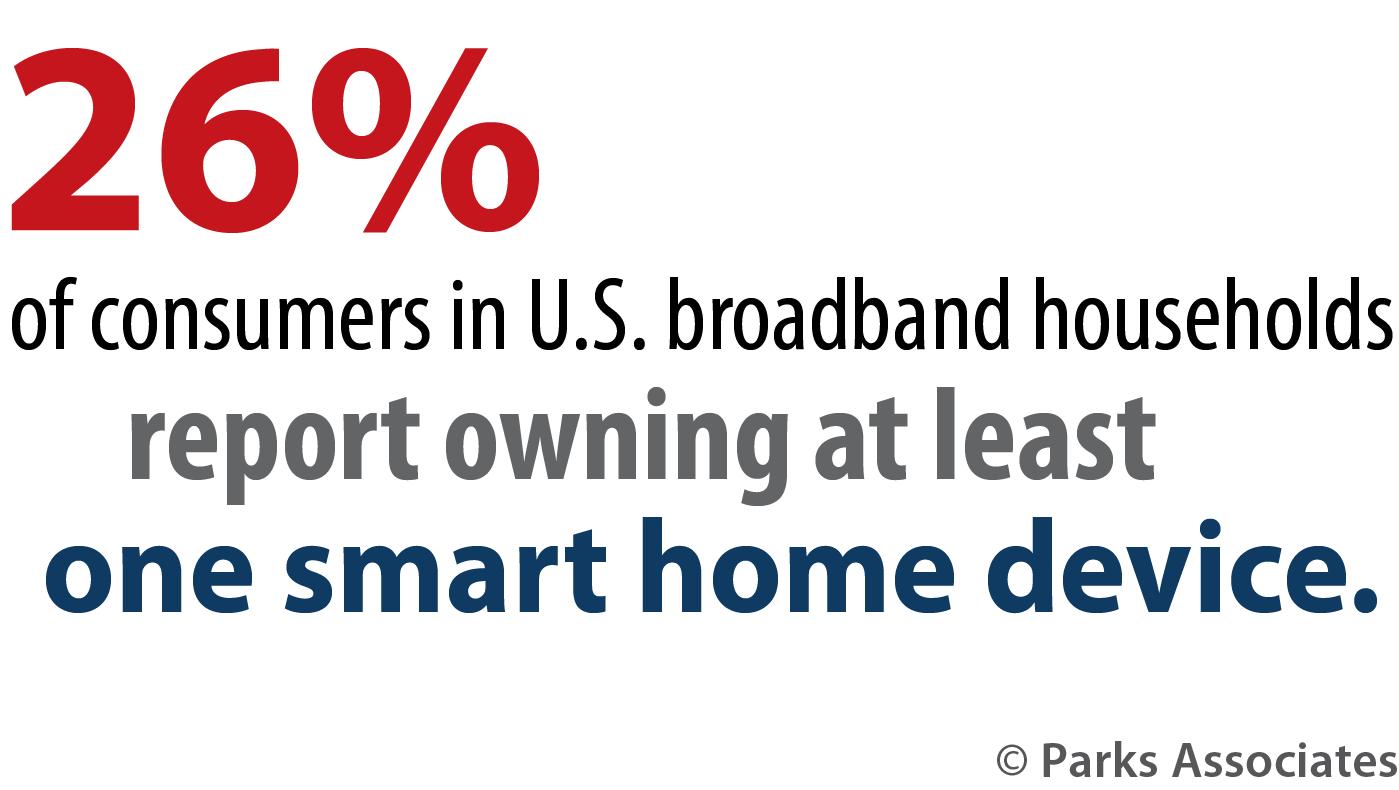Video/Audio Analytics Add Needed Context to the Smart Home
The smart home today is not really all that smart. It is obedient and does what it is told to do, but has limited capability of making decisions on its own. Decision making requires first, an understanding of the situation, and then a method to make a decision based on the situation. The smart home industry must focus on understanding what is happening in and around the home, and the first step in understanding that context is gathering data. The sensors embedded in smart home products and services provide the foundation for smart home solutions. Yet many smart home solutions are not equipped with the appropriate sensors to understand context.
According to Parks Associates research:
- 26% of U.S. broadband households currently own at least one smart home device, and annual sales of all connected home devices are projected to increase to 442 million units by 2020.
- Of all the smart home devices, no single device has more than 13% penetration.
- Nearly one-third of householders report owning some connected device that can be remotely accessed or monitored.
-
In 2017, 35% of smart home device owners report experiencing problems with their devices, up from 28% in 2016.

Humans are outfitted with five senses to understand their surroundings and interact with their environment. Sight and hearing are perhaps our most powerful senses. Homes will need similar senses to serve and protect themselves and their occupants. Sight is the combination of our eyes, which allow us to see an image, and our brain, which helps us interpret those images. Similarly, sight in the home is the combination of the sensor and the data analytics, the image, and our ability to understand what is happening in that image. Video analytics are built layer upon layer. Early analytics efforts focused on finding edges and objects within an image. Then came the ability to track objects, then, more recently identifying human objects, pets, and things such as cars and packages. We have now arrived at a stage where video analytics can identify the face of a human object, read a license plate number, and identify a make and model of a car.
Today, facial recognition is available in video door bells and networked cameras. The value of video analytics is realized when they provide more intelligent alerts to users, reduce false alerts, increase the speed of verification in a security event, or trigger automation sequences to personalize the experience. While video analytics have come a long way in a relatively short time, they are still in their infancy. There are many more objects to identify besides humans and there are many events to identify to allow the home to serve and protect itself and its occupants.
Audio analytics have taken a similar path. Analytics solutions have focused on identifying and interfacing with humans. Voice recognition, speech to text, and natural language processing have transformed the user interface and opened up direct access to the vast computing resources from the internet. At the beginning of 2017, 49% of U.S. broadband households were using a personal assistant through an application or dedicated device. Due to its accelerated growth and consumer interest, the voice-first landscape is rapidly changing and influencing the adoption of voice-enabled products. Yet, there are many sounds beyond speaking that need to be identified. A door knock, a crash, or a fall are all events that are critical for understanding context. The capability to identify these sounds can now be embedded into a device to increase the speed at which audio data can be merged with other data to form a clearer picture of activity in the home.
The advancements in human-centered audio and video analytics have been transformative to the industry, and necessary to move the smart home beyond early adopters, but the truly intelligent home is still in the distance. Luckily, just as human-centered analytics have added significant value, the meta-data from both audio and video analytics, the events, the movement and position of objects throughout the home, will also provide significant value to consumers. Context is a value proposition unto itself, and is a key stepping stone on the journey toward truly intelligent and autonomous services wherever we live, work, and play. Advancements in video and audio analytics are crossing over from the home to the office, and vice versa. Once consumers experience smart products in one sphere of life, their expectations will rise to extend that experience everywhere.
Further Reading:
- Quantifying Opportunities in Smart Home Adjacencies
- Nearly 50% of U.S. broadband households use a personal assistant through an application or dedicated device
- IoT: Smart Devices and Data-Driven Services
Next: The Slope of Enlightenment
Previous: The Impact of Voice Control and AI on the Smart Home
Comments
-
Be the first to leave a comment.
Post a Comment
Have a comment? Login or create an account to start a discussion.


